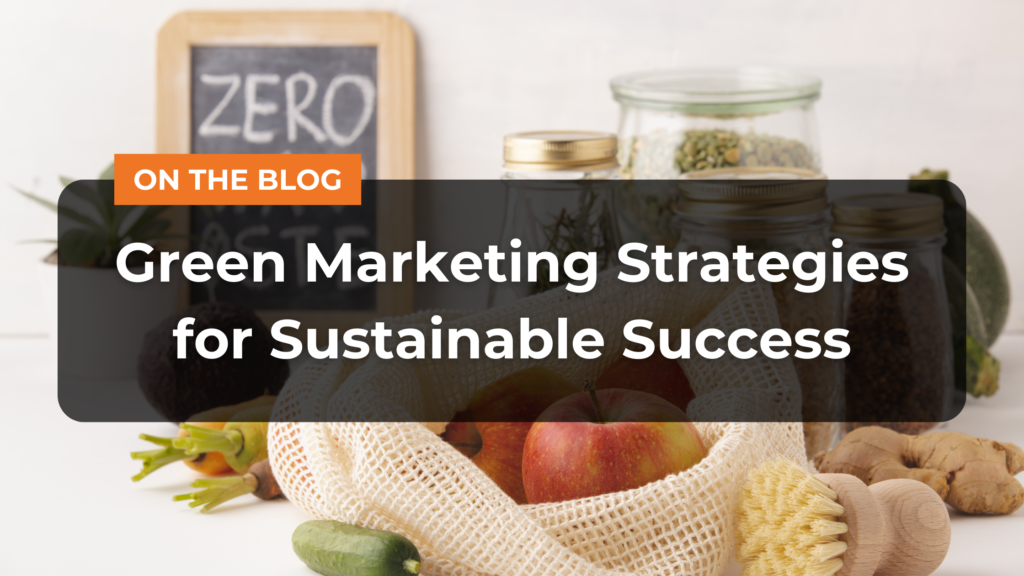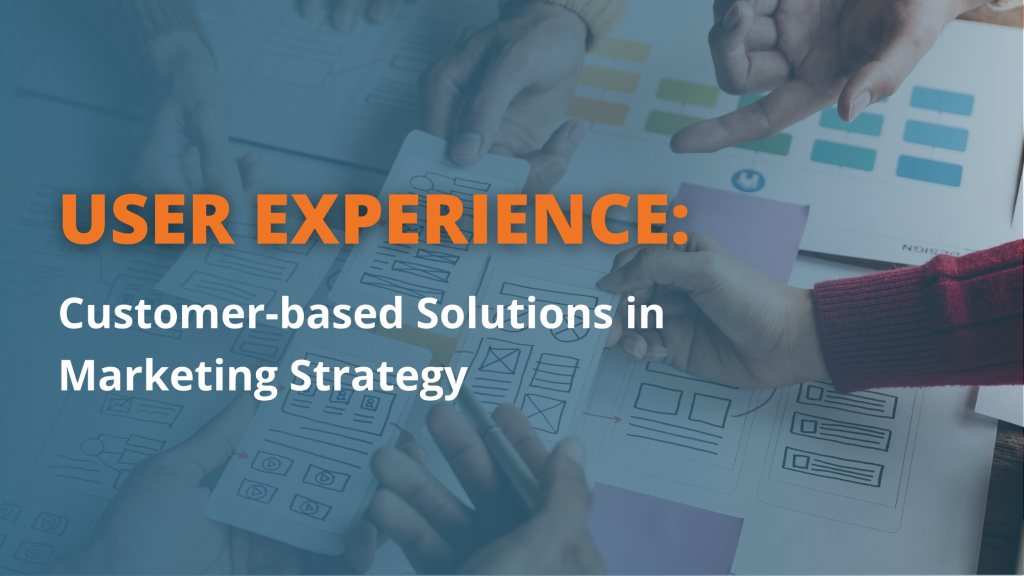The sales and marketing departments have a bit of a rough history of not getting along.
Sales want marketing to put down their fancy spreadsheets and models and just pick up a phone. Marketing feels that sales are nothing more than call jockeys who would be lost without the strategic brilliance of keen marketing minds.
Needless to say, neither one is especially correct.
In reality, it’s a symbiotic relationship. Sales teams are far more effective if they’re using marketing-qualified leads, and all the marketing leads in the world are worthless if you don’t have anyone to close them.
But the line between these bitter rivals is starting to blur.
Now, the job of prospecting new leads, nurturing them to fruition, delivering them to sales and converting them into accounts isn’t solely the responsibility of sales or marketing. There is rarely a clear handoff point. Instead, marketing is involved in content creation and lead nurturing long into the sales cycle. Sales is involved in informing messaging, content ideation, identifying pain points and brainstorming new markets for expansion.
We’re going to explore how these teams can bury the hatchet using data, content, automation and the power of customer relationship management to reach the one goal we all have in common—growing a business.
In other words, how to marry sales and marketing with CRM.
What are CRMs?
 Customer relationship management systems, or CRMs, are software suites designed to track, measure and score leads as they move through the sales funnel. Usually cloud-based, CRMs have emerged as critical linchpins for how organizations develop and execute sales processes.
Customer relationship management systems, or CRMs, are software suites designed to track, measure and score leads as they move through the sales funnel. Usually cloud-based, CRMs have emerged as critical linchpins for how organizations develop and execute sales processes.
The reason that organizations flock to CRMs is simple: they provide tremendous automation, process development and optimization opportunities which, over time, create a more effective sales team.
For example, if you think back to the 1970s, sales was an industry of personal skill. There was little training, and salespeople got better with experience. Organizations accepted that there were going to be some superstars and some terrible salespeople, but conventional wisdom was that sales couldn’t be taught. You either had it… or you didn’t.
The consequence was that organizations were leaving piles of money on the table. Even if they did realize that one salesperson was getting 20% or 30% more on similar deals compared to everyone else, there was no way to replicate that success.
But with CRMs, organizations suddenly have access to automation, lead scoring and intelligence, and most importantly – data. They can use this data to:
- Uncover insights about how often they should contact prospective leads
- Determine which verticals are closing quickly and which ones are not
- Understand when the right time to send someone a white paper is and when it’s time to book a meeting
- Predict when someone is ready to hear from a salesperson and when a sales call is a complete waste of time
Essentially, the development of robust CRM software allowed organizations to track every single sales action point, compile that data and then mine it for insights. With a little bit of A/B testing, organizations suddenly had a tremendously powerful optimization engine.
This isn’t to say that sales teams turned into scripted monkeys. There is still a lot of skill and expertise, experience and ineffable emotional intelligence needed to close. But armed with a CRM, organizations have been able to develop incredibly robust systems and processes that give sales teams the best possible opportunity to close. This makes great salespeople amazing and brings even average sales teams up to snuff.
In short, Customer Relationship Management means that leads are tracked, segmented, nurtured and pre-qualified by marketing before being passed to sales, increasing close rates and reducing close cycles.
The wealth of data has spawned a whole world of data-driven, sales-assisting marketing tools and techniques used to drive organizations forward. In fact, we’re prepared to make a bold claim:
No innovation has shaped the marketing world more than the widespread implementation of CRM.
With the development of CRM, the marketing industry has been able to embrace:
- Content creation in all its manifestations (inbound marketing, sales enablement, lead nurturing, etc…)
- Lead segmentation (powering retargeting, funnel optimization and better MQLs)
- Loyalty and reward programs (powering better account management)
- Marketing automation (making content marketing and lead segmentation feasible at scale)
So let’s look at those in a little more detail, and see why sales and marketing can now get along.
Content creation
The most significant change to marketing post-CRM has been the development and proliferation of content, and its role in aiding and abetting sales teams.
Content can take any number of forms, including traditional formats like white papers (or orange papers), leave behinds, sell sheets and feature lists, or more modern creations like how to videos, social media posts, blog posts, videos, infographics and more.
Broadly speaking, content is anything that’s generated by the marketing team to help develop a relationship with leads, push them through the sales funnel and help close deals.
Over time, a couple of methodologies have evolved that are worth mentioning.
1. Content/inbound marketing
Content, or inbound, marketing is the idea that your organization’s goal shouldn’t be to sell your product. Rather, it should be to serve as a useful resource to potential audiences, regardless of whether or not they choose to purchase.
The philosophy is that most people are not searching for your product at any given time. Traditional marketing focuses almost exclusively on the few people who are at the end of the funnel OR at the top of the funnel with brand awareness.
Content marketing is different. It focuses on helping people, regardless of where they are in the funnel, by solving problems related to your product.
For example, if you are a home renovation company looking to take an inbound approach to marketing, you might produce content that helps people with common DIY problems, like installing ceiling fans or replacing locks.
This might seem a little backwards—you don’t want to be giving away your “trade secrets.” And after all, if you tell someone how to install a ceiling fan, they won’t call you to do it for them.
But the magic happens later when they recall your company. When that same person is considering a much larger job, say, fixing the roof when a tree falls on it, the organization who provided so much utility months or even years earlier will spring to mind.
The benefit of this approach to organizations is clear.
For starters, in our example, there was no way that customer could be targeted. Unless an organization was marketing directly to people who live next to large, sturdy, but potentially roof-destroying trees, that customer would never be predicted. That means as soon as they start searching for a solution provider, the organization will be competing with everyone else at the bottom of the funnel, when price and brand awareness play a much larger role (two traditionally extremely expensive factors to compete on).
Second, because content can live on for years or even decades (ceiling fan installation, for example, hasn’t really changed much since the early 1990s), it means that a single piece of content has a very high chance of paying for itself (e.g. if a lock replacement video costs $100 to produce and $1 per month to host online, and the average lead is $150, it only needs to generate one converting sale a year for three years to generate a 330% ROI).
Finally, it means that leads are coming to you. Your sales team isn’t cold calling people to see if they need home reno solutions. It’s customers putting up their hands saying ‘I’d like to buy your product.’
So what leads do you think close more often, inbound or cold calling?
2. Lead nurturing
Inbound marketing isn’t the only use of content though. While inbound marketing focuses primarily on delivering leads to the sales team (e.g. turning the prospect universe into leads), lead nurturing is about moving someone through the funnel.
It usually takes the form of drip-feeding content to someone who’s opted for exclusive content via a website. Usually, the goal is to get them to request a sales contact, either via a demo or quote process.
A standard lead nurturing process for our home reno company might look like this:
- Prospect fixes their ceiling fan using a how-to video they found on the website.
- When the prospect is looking for a new dishwasher, they download a white paper on what to look for in a dishwasher, providing their email in exchange for the exclusive content.
- Because the prospect downloaded something about kitchens, they’re drip-fed emails automatically (more on automation in a minute) on other kitchen renovation projects they might like, such as ‘10 things you didn’t know you could clean in your kitchen but absolutely should’.
- Eventually, the prospect decides to renovate their kitchen.
- They reach out to the company who’s been so helpful via the CTA at the bottom of a drip email that reads “Get a kitchen reno quote today!”
That basic format is how most lead nurturing works. It can also be used to:
- Plug gaps in a leaky funnel (retargeting)
- Re-engage decaying deals or prospects
- Bring old clients or prospects back into contact with the company
Sales enablement is a close relative to lead nurturing, but one that is usually less automated. It’s about giving sales the tools they need to close deals. Sales enablement is used for larger, more complex products in the B2B space, like software solutions or enterprise sales, but it can be used for things like major consumer purchases like cars.
Sales enablement is a role filled by marketing that has only deepened as marketing has turned towards content. Now, marketing is producing everything from customer-facing content to scripts, best-practices and training materials to help close sales.
All this content generation is driven by one thing – data. Because of CRMs (and other software), marketing teams are much better poised to create the items sales needs in order to close. What’s more, because of this data-led, inbound marketing approach, sales are being fed high-quality leads with a much higher close rate than in the past. Suddenly, the case that ‘marketing doesn’t do anything’ isn’t quite so compelling.
Lead segmentation
The second major advancement that marketing has taken from CRM implementation is lead segmentation and its cousin, lead scoring.
Lead segmentation is a big part of lead nurturing. It’s the ability to split a jumbled pile of contacts into streams based on similar characteristics.
Which, in itself, isn’t so special.
But what makes lead segmentation in the context of a CRM so interesting is what you can base your segmentation on.
For instance, segmentation based on contact time, projected deal size or any fields you require for exclusive content is relatively simple. But with a CRM, you can segment based on things like:
- Number of times the lead has viewed pricing information within a set timeframe
- Previous purchasing behavior
Segmentation is usually divided into two sections: implicit segmentation and explicit segmentation.
Implicit segmentation is the segmentation that marketing has traditionally provided sales teams with. This is segmentation that looks at things like demographics and target audiences. It includes pulling data from internal sources and external market research to build a target audience. For example, imagine that you sell light beer.
You might target men aged 35-50 earning about $55,000, with two kids.
Explicit segmentation is a more recent innovation. It’s about segmenting leads based on some interaction they’ve had with your company. Retargeting users who have visited your website, for instance, is one example of explicit lead segmentation.
The power of CRM and marketing automation software is that you can develop extremely complex and dense segmentation techniques, splitting leads by a combination of factors and then sending specific messages to each segment. For instance, users who have visited the pricing page twice already might get targeted with a discount message, whereas those who visited once might be fed product/service validation and social proof.
Out of this model emerges lead scoring. By segmenting leads based on their affiliation to buy, it’s a pretty simple step to give leads a score. Lead scoring is a key product offering for major CRM providers like Salesforce, whose lead scoring techniques allow organizations to focus on important leads first by default, maximizing their return on investment.
Loyalty & rewards programs
So far, we’ve talked a lot about lead acquisition and nurturing, essentially looking at sales as ending when the sale is closed.
But as any successful company can tell you, it’s a lot easier to get someone to buy again than it is to entice a first-time buyer. So it’s worth mentioning how CRMs, sales and marketing impact loyalty and rewards.
First, a CRM automates the process of getting customers to re-up on their purchases. For subscription-based services, for example, CRMs give companies the opportunity to target customers exactly when they’re thinking about their subscription, and can automatically alert sales teams a month, week or even day before a user’s contract expires. Likewise, a CRM can help automate how sales teams reach customers who have lapsed by allowing marketing to re-target recently-unsubscribed customers with pricing or discount incentives before sales swoop in to close.
The same methodology works for non-subscription products as well. For instance, a car dealership might send a ‘car-a-versary’ card to past customers each year congratulating them on their purchase (and continuing the relationship with the dealership).
Of course, just like sales data captured via a CRM offers a tremendously powerful marketing and sales opportunity, there is tremendous power in using a loyalty program to capture customer data and use it to retarget, re-engage, resell and reconnect with customers.
The best example of this is supermarkets.
Supermarkets have some of the most developed loyalty programs around and use their data extremely effectively. For instance, many supermarkets use propensity models to automatically target consumers with products that they’re likely to buy based on what they’ve already purchased, or target users to re-purchase high-margin products like baked goods and deli products.
Other organizations can implement the same sort of tracking, retargeting and re-engagement (especially using app-based loyalty programs).
Marketing automation
Finally, we get to marketing automation.
Everything we’ve talked about so far requires a lot of work. Lead nurturing alone, for instance, might require dozens of emails carefully timed to go out regularly over months or even years.
There’s no possible way to administer all of this. The effort of creating content alone is enough to cripple most marketing budgets, so much so that reusing and repurposing is essential to drive down the cost of content creation.
So how is all this completed? The answer lies in marketing automation software.
Marketing automation software like Hubspot, Mailchimp, Marketo and Pardot works to turn the data captured and curated through digital interactions, tracking and CRMs into actual marketing campaigns.
It’s best to think about it as a process. Marketers create the content and define the process and parameters once. Then, whenever a new lead or user comes along that meets those parameters, it kicks off the process and automatically goes through the correct drip campaign.
For instance, let’s say a user visits a website, downloads a white paper (exclusive content, so now the organization has an email) and visits the pricing page twice.
The second pricing page visit might trigger a process that sends the user content related to the whitepaper (simple ‘if this, then that’ logic could assign the right content to the right user), followed by a series of emails, each one carrying product information. After the second email, the user might get served a discount message. Each email carries a ‘contact sales’ CTA.
If they then contact sales, they are kicked out of the automation chain and sent into the sales funnel as a highly-qualified marketing lead.
This would be incredibly arduous to execute manually. But with marketing automation software, it’s possible to segment, nurture and re-engage users with the right message at the right time, delivering them to sales when they’re absolutely ready to listen to the sales team.
By building strong, automated campaigns, marketing teams free up time to focus on high-value tasks like optimizing campaign performance and generating compelling, engaging content to fuel their marketing activities.
With CRMs, marketing automation and content generation, sales and marketing are starting to get along. Powered by data, marketing is more capable of helping sales and sales is more process-based than ever before, reducing stress and improving results for everyone. With data, sales and marketing are finally the dynamic duo they were always meant to be.
And if that’s not a love story that melts your heart, we don’t know what is.






